
5 Fun Exercises For Young Horses
While working with young horses is one of the most exciting stages for riders, it can also come with its share of frustration: finding fun exercises for horses can be difficult. Indeed, riders who do not have the opportunity to ride more experienced horses alongside their foals can sometimes feel a little frustrated at the idea of doing only small level exercises based on a trot and canter start. However, there are many possibilities in a more playful register. Let’s take a look at 5 ideas for flat exercises that are fun and suitable for young horses.
Table des matières
The Young Horse according to the Training Scale
Are you familiar with the training scale? It is a document produced by the FEI and the FFE to give a basis of judgement to all judges for movements of all levels. It turns out that apart from being used by judges, it is an interesting tool for riders. This training scale helps us to reposition the basics and to order our work correctly. So it’s a great help to make sure we’re doing things in the right order when working a young horse.
Here it is:
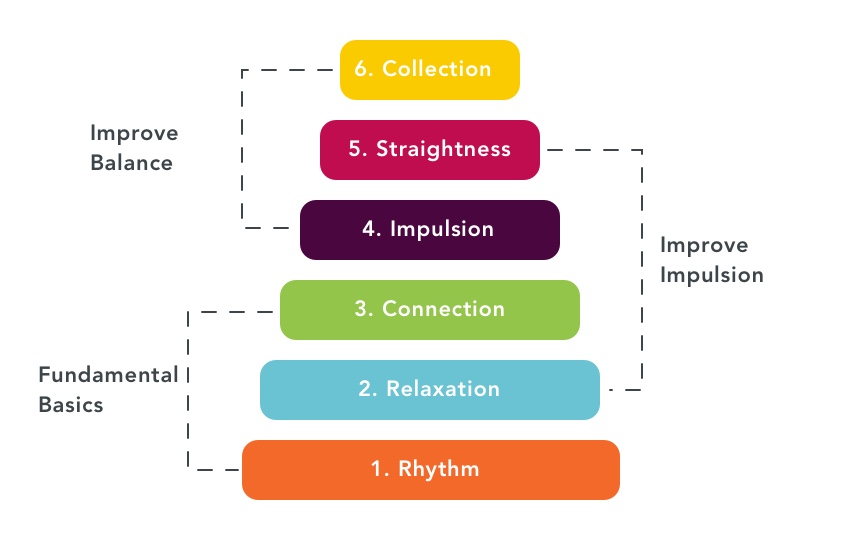
When working with a young horse, you will need to start with the first 3 steps that make up the « Fundamental basics” stage.
Rhythm
In this first step, the rider should focus on controlling the gaits and more broadly the rhythm of them.
Rhythm is to be dissociated from cadence. By rhythm we mean here the respect of the posing of the limbs and the support times according to the gait. Thus, a four-beat canter or a lateralized walk are not correct in terms of rhythm.
🎯 Thus, we are looking for a horse with good impulsion so that they carry forward, whose 3 gaits are held in both hands and with a controllable direction.
Flexible and relaxed
In this rung of the training scale, the rider should seek to have a horse that is relaxed, loose in their mouth but also in their body.
Connection
This third level understands the achievement of the horse being on the bit. The horse has a supple mouth; he naturally lays on the hand. His neck is spontaneously well oriented and he can unfold it at any time. Your horse functions in a fair manner and can approach lateral work.
The next 5 exercises will thus allow you to approach these different stages with your young horse.
The Bow Tie 🎀
This very simple exercise is a change from the classic slalom or figure eight. It is very suitable for young horses at the beginning of their training to master the direction.
Put the poles far enough apart at the beginning, then move them closer together as you go. Do this exercise at walk and then at trot.
🎯 Your goal should be to have a horse that stays in his gait, maintaining a steady rhythm and cadence even in changes of direction. You should be able to make symmetrical loops. The horse should relax as you go, gaining balance on the ends of the loops.
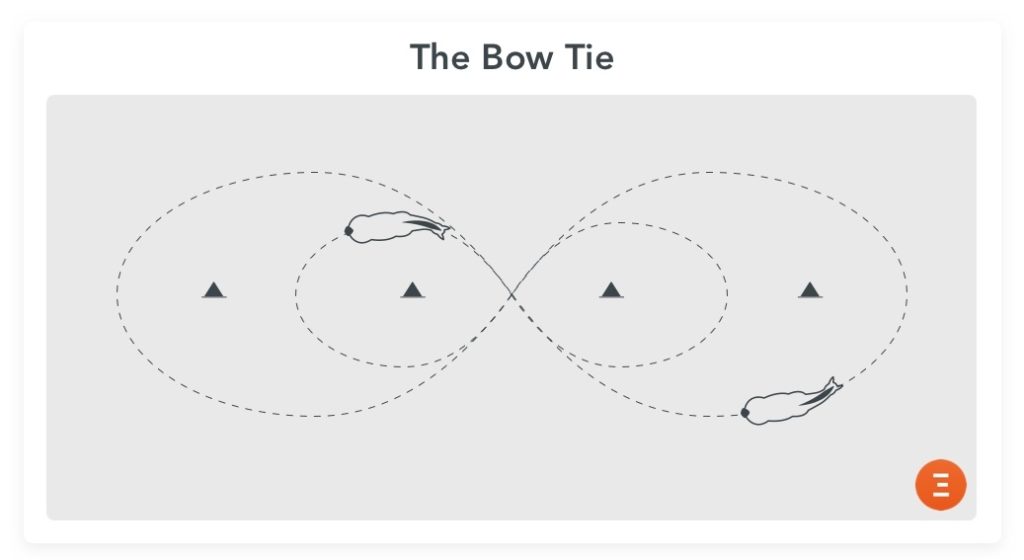
📈 To go further: Feel free to enlarge and shrink the loops of the bow tie, as well as to vary the amplitude of your horse according to his level. These variations will make the exercise all the more complete.
The Bus Stop 🚌
This exercise will allow you to approach the transitions between gaits. Set up 4 “transition zones” on the track, marked with poles or studs. Place them close to the corners at the start. Simply perform transitions between gaits (halt, walk, trot, canter) in each of these lanes.
🎯 Your goal should be to successfully complete 4 transitions per lap with a calm, relaxed horse. In the beginning you may circle between each transition to settle into a correct cadence.
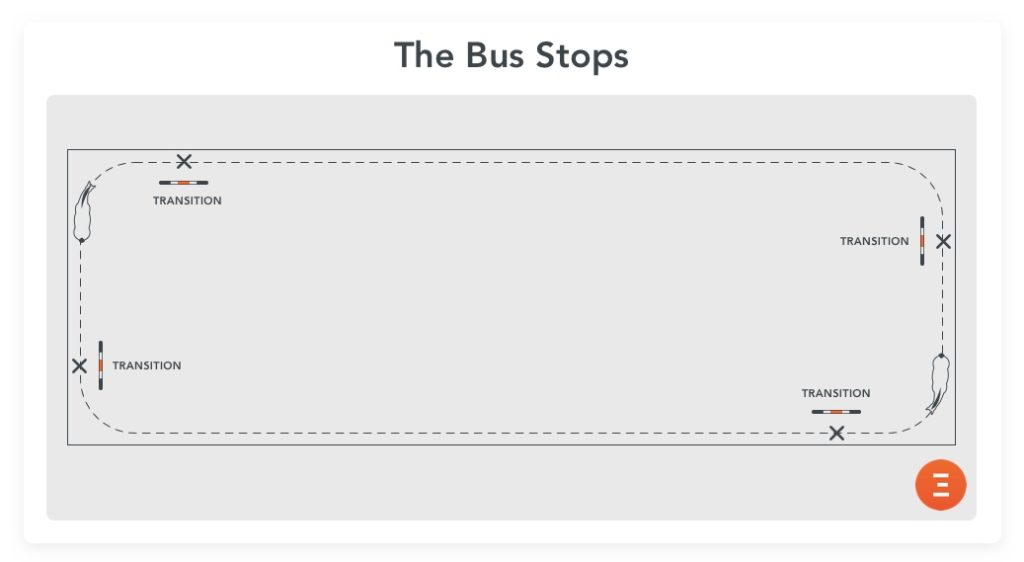
📈 To go further: As your horse progresses, you can avoid these circles, bring the transitions closer and closer together, vary them as well and of course be more precise. You can even add extensions between two transitions.
💡 More to read: The Purpose of Equine Ostheopathy
The Garland
The garland combines the direction work with the transition work. It is therefore only to be performed when the transitions are well acquired.
The exercise is simple: lay out a set of gates on the track, marked with poles or studs. At each gate, you must make a transition between gaits, followed immediately by a circle of varying diameter (10m, 12m, 15m or 20m).
🎯 Your goal should be to successfully make increasingly precise transitions, followed by well-drawn circles whose diameter has been anticipated. The horse should be relaxed, supple, with a soft, even contact and balanced on these circles.
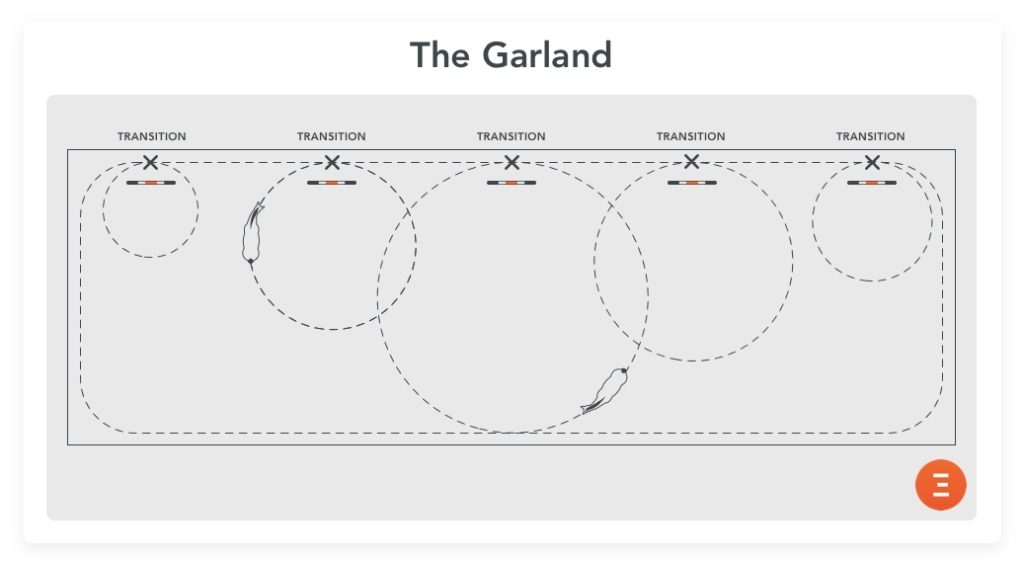
📈 To go further: When your horse masters the exercise with the lanes on the track, vary the device by putting him on the middle line. You can then do the circles alternately on the right and on the left.
The Figure Eight With Ground Poles
This exercise will allow you to approach the ground poles lines on the floor quite easily. In fact, incorporating them into a figure eight will allow you to easily control the cadence through the circles. Start with one or two and work your way through them. Start the exercise at the trot with 2 poles, then 3 when your horse is a little more comfortable.
🎯 Your goal should be to have a successful passage on the ground poles with a horse that hardly changes his cadence or attitude, and remains perfectly smooth and relaxed. Don’t try to get him in too low an attitude. Keep him in a natural but supple attitude with a soft touch.
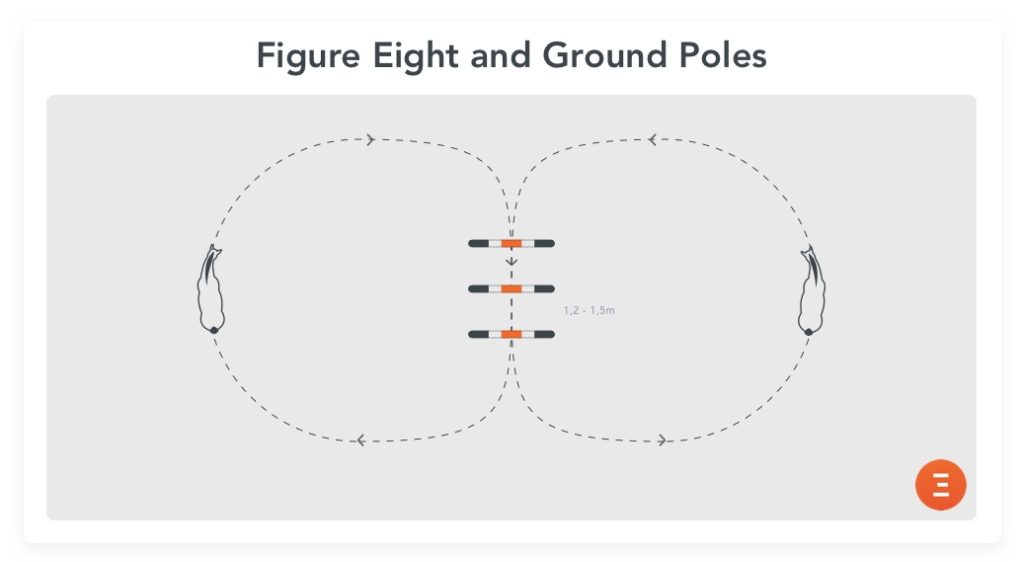
📈 To go further: You can progressively add poles (up to 5 or 6 poles), space them out a little more from each other, and even raise them slightly to make a very complete bodybuilding exercise.
Linking Lines Together
This exercise is very simple to understand but a little more difficult to perform at canter for young horses. It should only be done when the first two steps of the training scale are acquired.
It is simply a matter of arranging 3 lanes of poles in a Y shape. Start with the bottom lane, then move to the right lane. Complete a left hand semicircle, then move to the left lane, followed by the bottom lane. Repeat on the other lead.
Start by doing it at trot. At this stage of your horse’s development, the exercise should not be a problem.
The second step is to do the first part at a canter, then trot on the half circle and continue at trot. If you approach it in a left canter, follow it up with the left lane so that your horse makes the right curve.
🎯 Your goal should be to have a horse that is sufficiently well behaved to link the two lanes in a curved line without floating, in trot and canter. The transition from canter to trot must be mastered. The horse must remain calm and not rush to finish the exercise in a relaxed manner.
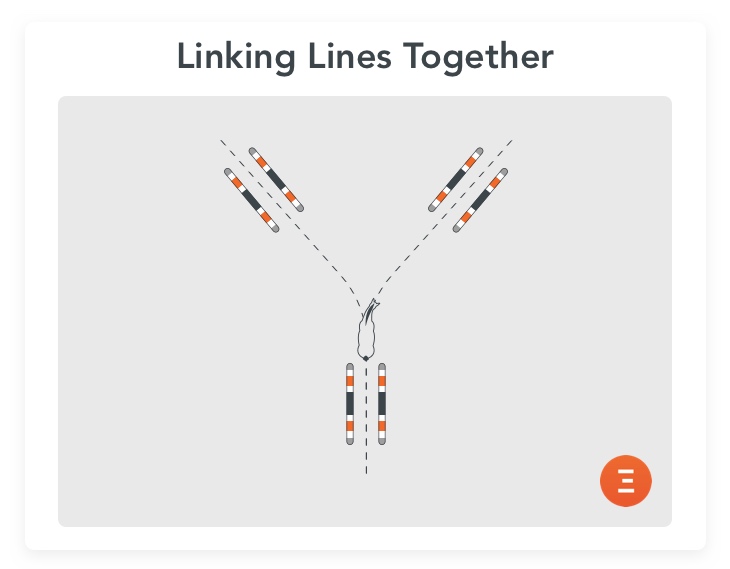
📈 Going Further: This is a good exercise to approach the curves at the counter canter when your horse has better balance.
The work of young horses is absolutely essential for the continuation of their career. It would be a pity to want to skip the stages of their training under the saddle on the pretext that the rider is bored on small exercises.
📲 So don’t hesitate to go to the Equisense mobile app, where you’ll find over 300 exercises for free.
Camille Saute
Biomechanics and Biomedical Engineer
Co-founder of Equisense